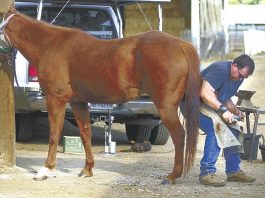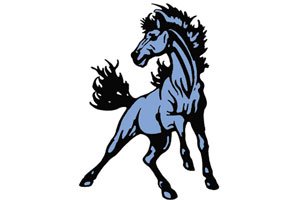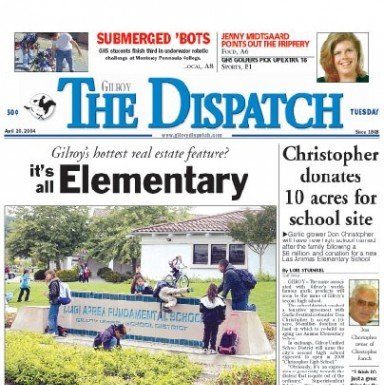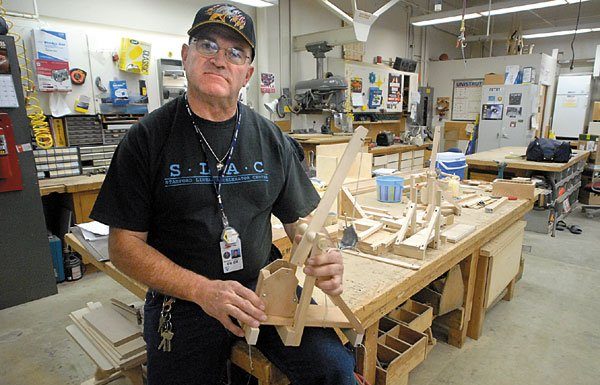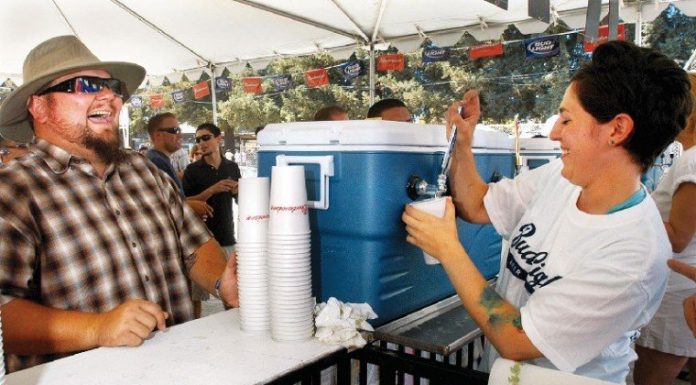BASEBALL: GHS wins third straight, tops North Salinas, 10-0
Mustangs play first of two games with San Benito today
Ag land way down but production is up
Half the farmland that Santa Clara County had 30 years ago has been lost to development but agriculture is thriving and in some cases is more robust than ever thanks to advanced farming techniques, according to a new county report.The report, already circulated at the Local Agency Formation Commission (LAFCO) and other regional bodies that control land use and promote its preservation, appears to supply arguments to both sides in Gilroy’s debate over annexing 721 acres of farmland to build 4,000 homes.LAFCO, which opposes premature conversion of farmland for development, is expected to rule on Gilroy’s annexation request later this year, and on one from Morgan Hill to annex 250 acres of farmland.It already alerted Gilroy city leaders of major concerns with the proposal, according to LAFCO executive officer Neelima Palacherla.The agricultural economics report was commissioned and released by Santa Clara County Agricultural Commissioner Joe Deviney.It is the first study to analyze the state and viability of the county’s agriculture industry—which is largely based in South County.It concludes that despite a “significant reduction” in farmland, “continued growth of both land and labor productivity has resulted in a county agricultural sector that is gaining in both production value and employment … driven by a shift towards higher value crops, increases in productivity, new technologies, and more efficient farming practices.” The per-acre value of irrigated farmland “has never been higher,” the report states.Deviney commissioned the report to resolve a long-standing debate over the viability of farming in the county and questions about its contribution to the economy.“This report says very clearly that ag is viable,” he said.The county’s 2014 ag production was valued at $276.2 million, up nearly five percent from 2013.The top two crops for 10 years have been nursery stock and mushrooms, which require less land than more traditional crops. Nursery crops brought in $75.5 million, and mushrooms $72.1 million. Bell peppers, a land-intense row crop, were a distant third at $15.4 million. Cherry production was down 70 percent to $2.6 million, according to the recently released 2014 county crop report.The economic analysis comes as county planners and the Santa Clara County Open Space Authority move forward with a grant-funded $100,000 study of the effects of farmland loss on climate in South County and the need to preserve land.OSA general manager Andrea Mackenzie said Wednesday that southern Santa Clara County “is one of our highest priorities,” as the special district created by the state legislature in 1993 goes about its business of land preservation. And that includes, she said, “keeping farms and ranching viable by ensuring there’s a land base for agriculture.”That effort took a powerful new tack when Gov. Jerry Brown, state lawmakers and others added land conservation policy to the arsenal of tools in the fight against climate change, according to Mackenzie.She called the combined Gilroy and Morgan Hill annexation bids “The (county’s) largest proposal for the conversion of farmland at one time in probably more than 30 years.”A recent OSA study also noted a sort of hidden value, beyond crop values, of farm and open space land, according to Mackenzie.“When you look at open space land there is a suite of environmental goods and services provided back to the local economy. We call these natural capital and they are the life-support system of our county,” she said.It includes such things as the value of land in flood control, percolation to the underwater aquifers and improved water quality. Those are valued conservatively at “$1.6 to $3.9 billion to the local economy, just as the agricultural contribution is $1.6 billion,” Mackenzie said.For opponents of Gilroy’s LAFCO application, approved by the City Council but not yet submitted, Deviney’s report states unequivocally that acreage in farming dropped from 40,000 in the late 1980s (excluding range land) to 20,000 in 2014, the year the data was collected.For advocates of development of the 721 acres, page after page of the report is filled with glowing statistics about the state of the county’s agriculture industry in spite of farmland losses.The full report, titled The Economic Contribution of Agriculture to the County of Santa Clara 2014, can be found here:http://adobe.ly/1njbM8L.
Holocaust survivor to speak, perform in Morgan Hill Nov. 18
Saul Dreier, a survivor of the Holocaust and founder of the Holocaust Survivor Band, will speak and perform at a special event in Morgan Hill on Nov. 18.
Born in Poland in 1925, Dreier’s youth came to a halt in 1939 with the outbreak of...
Vera scores game-winner at the very end
Gilroy High's girls soccer team overcame the elements to win in
Five Hours, Six Tasks, One Not-so-super Volunteer
The Garlic Festival runs like a well-oiled machine
California schools are underfunded compared to U.S.
At its Jan.17 meeting, the Santa Clara County Board of Education unanimously passed a resolution for full and fair funding for California Public Schools by state lawmakers.
The resolution highlights California’s poor national standing in funding for public schools. California ranks 45th nationally in the...



